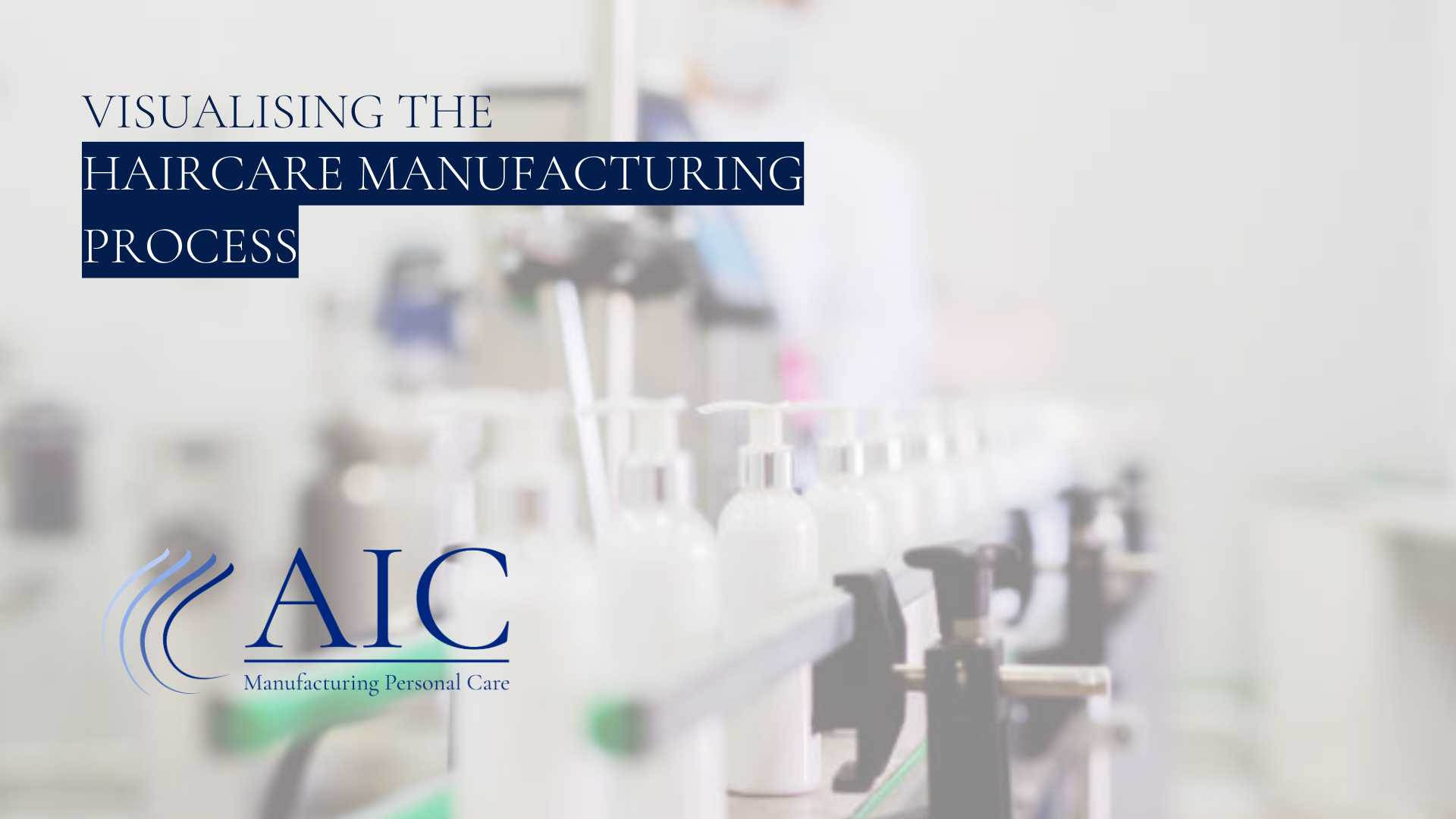Haircare Manufacturing: From the luxurious lather of shampoos to the rich conditioning power of masques, haircare products play a vital role in our daily routines. Have you ever wondered how these seemingly simple products transform raw materials into solutions for healthy, beautiful hair? Let’s embark on a visual journey through the haircare manufacturing process.
Step 1: Formulation
Imagine a team of scientists in a lab, meticulously measuring and blending ingredients. This is the formulation stage, where the magic happens. Here, haircare formulation experts combine raw materials like surfactants (for cleansing), conditioners (for detangling and smoothing), emollients (for adding moisture), and various active ingredients based on the desired hair benefit (e.g., volume, frizz control). AIC’s Research and Development (R&D) department is responsible for developing generic formulations that can be used in a wide range of use cases, tailoring them to customers’ specifications, especially regarding fragrance and colour, as well as creating unique formulations for customers’ exclusive use to bring the products of their dreams to reality.
Stage | Description | Additional Information |
Formulation | Creating a framework of raw material combinations to create a desired haircare product | May include researching carrier oils, essential oils, fragrances, actives and preservatives that meet the requirements of the latest trends or customer specifications. |
Step 2: Raw Material Sourcing and Testing
High-quality haircare products start with high-quality ingredients. Manufacturers like AIC source raw materials from reliable suppliers, ensuring they meet strict quality control standards. These ingredients may undergo rigorous testing to assess their safety, purity, and effectiveness.
Stage | Description | Additional Information |
Raw Material Sourcing and Testing | Selecting, sourcing and verifying the quality of ingredients | May involve supplier audits, laboratory analysis, and stability testing. |
Step 3: Mixing and Processing
Picture giant vats filled with a swirling concoction. This is where the formulated recipe comes to life. Large-scale mixing equipment combines the raw materials according to precise methods. Depending on the product type, additional processing steps like heating, cooling, or homogenization (creating a uniform consistency) might be involved.
Stage | Description | Additional Information |
Mixing and Processing | Combining and processing ingredients to create the final bulk product ready to be filled. | May involve high-shear mixing, heating/cooling cycles, and homogenisation. This is especially true for multi-phase products, like emulsions. |
Step 4: Quality Control
Maintaining and ensuring product consistency and safety is paramount. Throughout the manufacturing process, samples are meticulously tested against a specified standard for chemical factors like pH level, viscosity (thickness), colour, and the presence of any contaminants.
Stage | Description | Additional Information |
Quality Control | Rigorous testing to ensure product quality and safety | May involve chemical analysis, microbiological testing, and stability testing. |
Step 5: Filling and Packaging
The finished product base is now ready to be transferred/ transformed into the familiar bottles and tubes we see on store shelves. Depending on the volume of product to be packed; either automated filling machines dispense the precise amount of product into containers, or specially trained staff handfill the bulk product into containers, followed by capping, labelling, and packaging.
Stage | Description | Additional Information |
Filling and Packaging | Filling containers, capping, labelling, and packaging the final product into shippers or shrinkwrapped | May involve different packaging options for different product lines. |
Step 6: Labelling and Compliance
While haircare products in South Africa are unregulated, there are some aspects of the products that must comply with regulations set by retail governing bodies. This involves adhering to labelling requirements that list ingredients, usage instructions, and any safety warnings (Safety warnings are especially important. Apart from merely adhering to regulation, they ensure the health of end users, which is vital for market sustainability).
Stage | Description | Additional Information |
Labelling and Compliance | Adhering to labelling regulations and ensuring product safety information is displayed | May vary depending on the geographical location of the manufacturer and target market. Any health/ medical claims would need to be verified as per SAHPRA regulations |
Step 7: Warehousing and Distribution
Once labelled and packaged, the finished products are stored in batch managed warehouses before being shipped to distributors, retailers, and ultimately, to you!
Stage | Description | Additional Information |
Warehousing and Distribution | Storing and shipping finished products to distributors and brand owners | May involve sophisticated logistics systems to ensure efficient delivery. |
The Role of AIC in Haircare Manufacturing
Throughout this intricate process, maintaining a clean and hygienic environment is crucial. This is where AIC comes in. A trusted leader in industrial hygiene solutions, AIC also offers a comprehensive range of home care products, such as disinfectants and cleaning products. By ensuring a safe and sanitary production environment, AIC helps create high-quality haircare products you can trust.
Conclusion
The next time you pick up a bottle of shampoo or conditioner, take a moment to appreciate the journey it took to get there. From meticulous formulation to rigorous quality control, haircare manufacturing is a fascinating and complex process. With the help of reliable partners like AIC, you can be confident that the haircare products you use are formulated and manufactured with the utmost care and hygiene standards, leaving you with healthy, beautiful hair.




